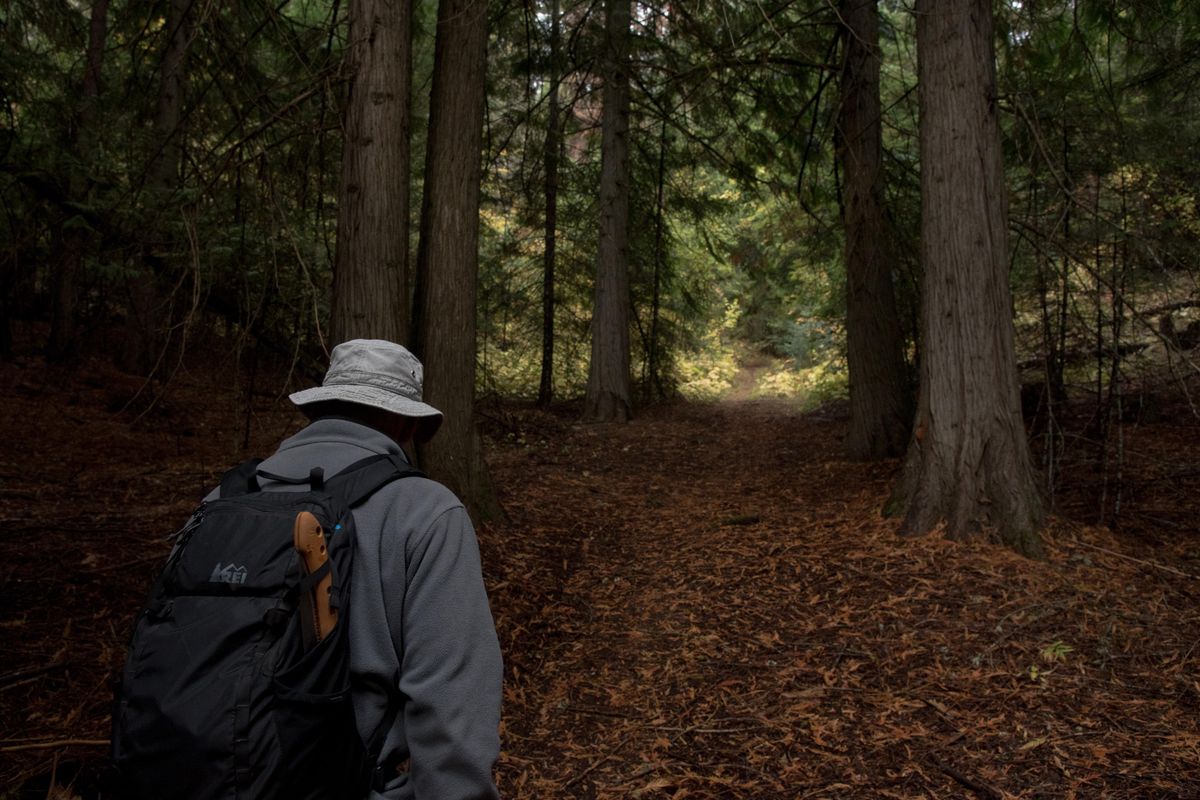Vision Quest trail pays homage to cult classic, adds new options for Newman Lake-area hikers

It’s not often that movie aficionados, history buffs and hikers find themselves all on the same trail. A newly created jaunt near Newman Lake promises to bring those disparate groups together.
The 1.5-mile-long Vision Quest Trail was completed this spring, adding another option to the already diverse 421-acre McKenzie Conservation Area.
The trail is named after the 1985 movie of the same name. Part of the movie, which is based on the book by Terry Davis (who was born in Spokane), was filmed in a cabin that used to sit on the land the trail runs through. The cabin was torn down in 2015 when the land was sold to Spokane County through the Conservation Futures program.
The former owner, who asked to remain anonymous, said location scouts for the movie called her after spotting the cabin from an airplane in 1984.
She wasn’t present for any of the filming, but she liked the movie.
“(After the film came out) we had troubles with people breaking in,” she said.
Movie hounds would illegally enter the cabin to see where Louden Swain’s grandfather had lived in the fictional universe. Of particular interest was an old Monarch wood stove that appears on screen, she said.
“I sold the stove to a couple who lived up in the Springdale area,” the former owner said. “They’re kind of living-off-the- grid-back-to-the-Earthers.”
The trail starts from the McKenzie Conservation Area parking lot, crosses the road and then heads west and uphill. The 1.5-mile loop is mostly shaded, although there are some open sections, including the one where the cabin used to sit. At the apex of the hike, Mount Spokane can be seen on a clear day.
On a hike Tuesday, fall’s colors were on full display and a recent rain made for a sweet-smelling excursion.
Lynn Smith, of Spokane Mountaineers, helped coordinate volunteer trail work. Forty-five volunteers spent 659 hours over two years building the trail – including Bob and Linda Pool, who accompanied us on Tuesday’s hike.
The vision for the trail came from Norm Thorpe.
“This is actually one of the best times of the year here,” Smith said.
The trail is designed for all-year use with no overly steep grades. It was also built with equestrians in mind. There is plenty of head space.
Although the parcel is relatively small – 41 acres – the trail craftily disguises how close everything is. Big, looping turns take you within a 100 feet of the return trail, but you’d never know it.
“The trail system really maxes out the holding,” Thorpe said.
Spokane County parks planner Paul Knowles said in an email that the trail is “a critical addition to the 5.5 miles of trail at McKenzie Conservation Area.”
As pleasant as the hiking can be, the real star of the show is the history of the place.
The cabin that “Vision Quest” was filmed in had a rich history long before Hollywood came to town.
For decades, it was a reclusive hermit’s abode. Joe Engeser lived in the cabin growing his own food, cutting his own wood and generally avoiding the wider world.
In a 1969 Spokesman-Review article, Engeser, who was 84 at the time, said he’d been living that way for 19 years. Engeser grew strawberries, raspberries, potatoes, onions, beets, lettuce and garlic.
He also, apparently, drank alfalfa tea.
“Lettuce just didn’t do this year,” Engeser was quoted as saying. “I’ll have to use these beet tops to get my greens. Eat the tops and the bottoms, too.”
Remnants of Engeser’s little kingdom remain. Dimensional lumber pokes out of the bushes. Metal and old cans are slowly merging with the earth. The former owner of the land said she once found an old Prince Albert tobacco can filled with silver dollars.
According to an online history of Newman Lake, Engeser was born in St. Paul, Minnesota, in 1887 and moved to the Newman Lake area in 1899.
Engeser died in 1970, one year after the Spokesman-Review article was published. According to an online history of Newman Lake, Engeser died in a nursing home in Spokane.
Thorpe and Smith encourage people to get out and use the trail for the cultural, historical and recreational benefits.
“It’s such a great easy-access place,” Smith said.
“The more people that use it, the better,” Bob Pool said.